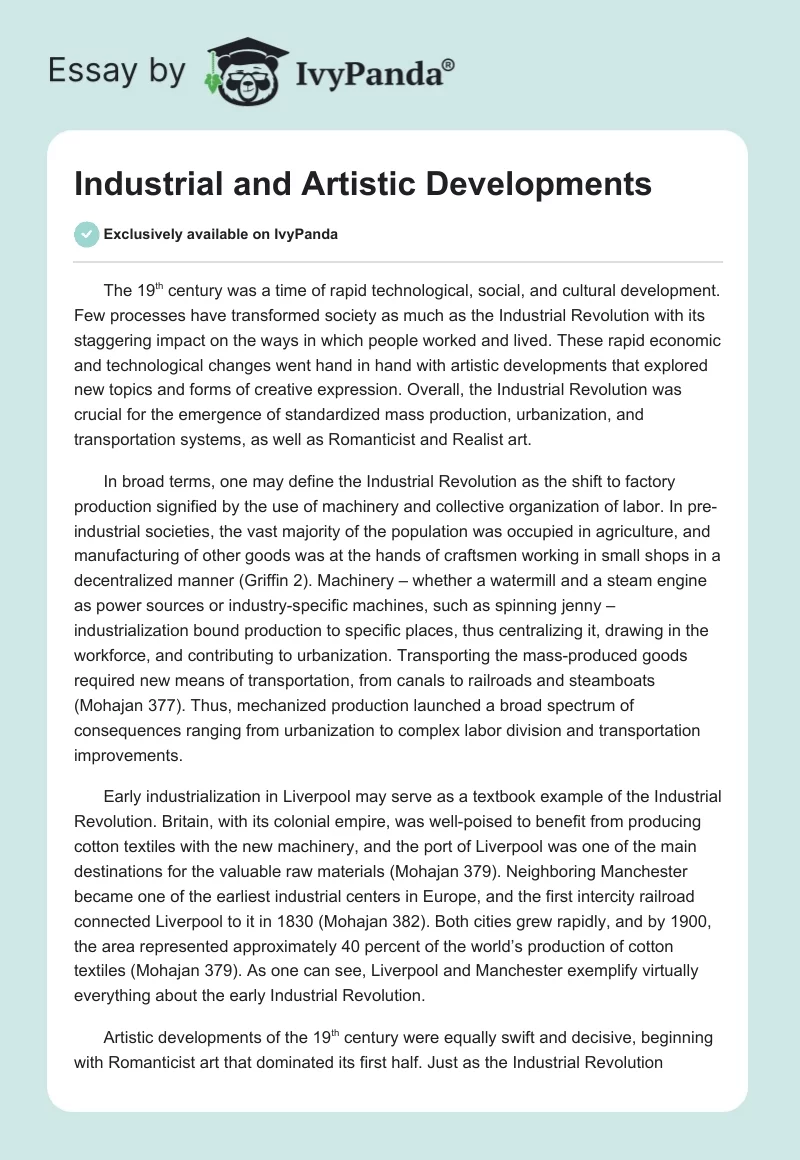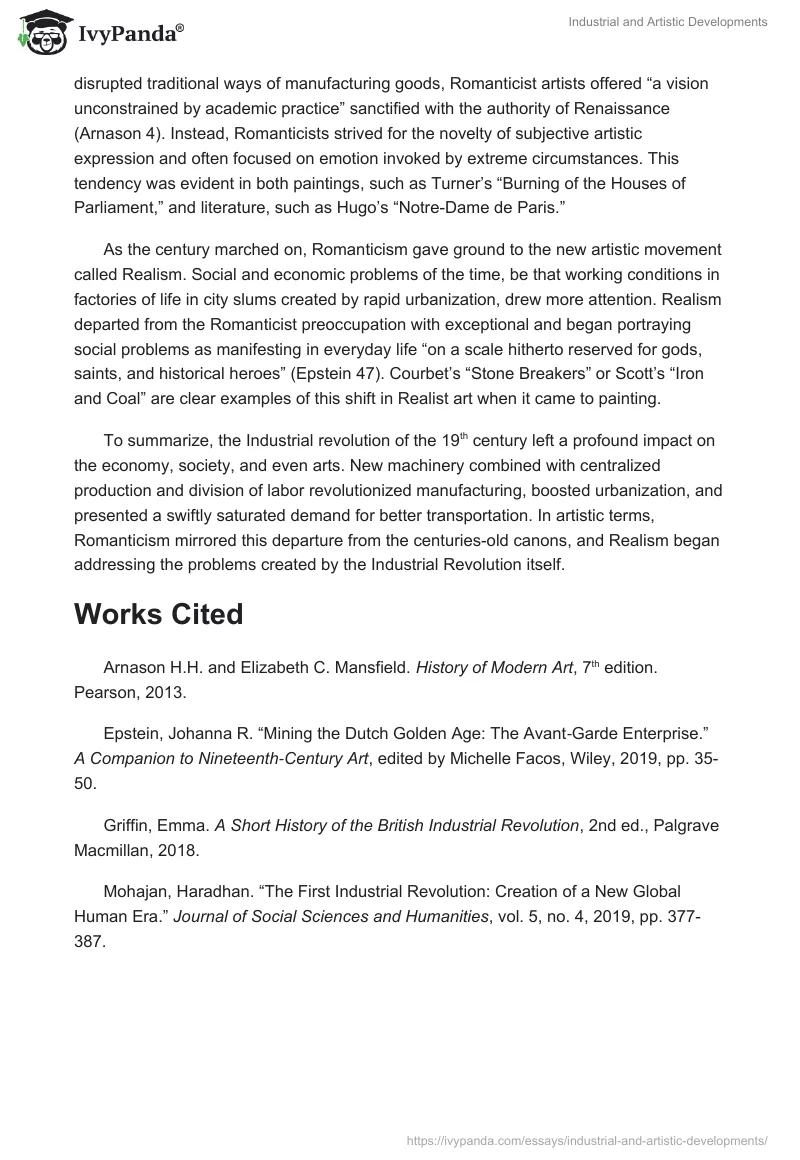The 19th century was a time of rapid technological, social, and cultural development. Few processes have transformed society as much as the Industrial Revolution with its staggering impact on the ways in which people worked and lived. These rapid economic and technological changes went hand in hand with artistic developments that explored new topics and forms of creative expression. Overall, the Industrial Revolution was crucial for the emergence of standardized mass production, urbanization, and transportation systems, as well as Romanticist and Realist art.
In broad terms, one may define the Industrial Revolution as the shift to factory production signified by the use of machinery and collective organization of labor. In pre-industrial societies, the vast majority of the population was occupied in agriculture, and manufacturing of other goods was at the hands of craftsmen working in small shops in a decentralized manner (Griffin 2). Machinery – whether a watermill and a steam engine as power sources or industry-specific machines, such as spinning jenny – industrialization bound production to specific places, thus centralizing it, drawing in the workforce, and contributing to urbanization. Transporting the mass-produced goods required new means of transportation, from canals to railroads and steamboats (Mohajan 377). Thus, mechanized production launched a broad spectrum of consequences ranging from urbanization to complex labor division and transportation improvements.
Early industrialization in Liverpool may serve as a textbook example of the Industrial Revolution. Britain, with its colonial empire, was well-poised to benefit from producing cotton textiles with the new machinery, and the port of Liverpool was one of the main destinations for the valuable raw materials (Mohajan 379). Neighboring Manchester became one of the earliest industrial centers in Europe, and the first intercity railroad connected Liverpool to it in 1830 (Mohajan 382). Both cities grew rapidly, and by 1900, the area represented approximately 40 percent of the world’s production of cotton textiles (Mohajan 379). As one can see, Liverpool and Manchester exemplify virtually everything about the early Industrial Revolution.
Artistic developments of the 19th century were equally swift and decisive, beginning with Romanticist art that dominated its first half. Just as the Industrial Revolution disrupted traditional ways of manufacturing goods, Romanticist artists offered “a vision unconstrained by academic practice” sanctified with the authority of Renaissance (Arnason 4). Instead, Romanticists strived for the novelty of subjective artistic expression and often focused on emotion invoked by extreme circumstances. This tendency was evident in both paintings, such as Turner’s “Burning of the Houses of Parliament,” and literature, such as Hugo’s “Notre-Dame de Paris.”
As the century marched on, Romanticism gave ground to the new artistic movement called Realism. Social and economic problems of the time, be that working conditions in factories of life in city slums created by rapid urbanization, drew more attention. Realism departed from the Romanticist preoccupation with exceptional and began portraying social problems as manifesting in everyday life “on a scale hitherto reserved for gods, saints, and historical heroes” (Epstein 47). Courbet’s “Stone Breakers” or Scott’s “Iron and Coal” are clear examples of this shift in Realist art when it came to painting.
To summarize, the Industrial revolution of the 19th century left a profound impact on the economy, society, and even arts. New machinery combined with centralized production and division of labor revolutionized manufacturing, boosted urbanization, and presented a swiftly saturated demand for better transportation. In artistic terms, Romanticism mirrored this departure from the centuries-old canons, and Realism began addressing the problems created by the Industrial Revolution itself.
Works Cited
Arnason H.H. and Elizabeth C. Mansfield. History of Modern Art, 7th edition. Pearson, 2013.
Epstein, Johanna R. “Mining the Dutch Golden Age: The Avant‐Garde Enterprise.” A Companion to Nineteenth‐Century Art, edited by Michelle Facos, Wiley, 2019, pp. 35-50.
Griffin, Emma. A Short History of the British Industrial Revolution, 2nd ed., Palgrave Macmillan, 2018.
Mohajan, Haradhan. “The First Industrial Revolution: Creation of a New Global Human Era.” Journal of Social Sciences and Humanities, vol. 5, no. 4, 2019, pp. 377-387.


